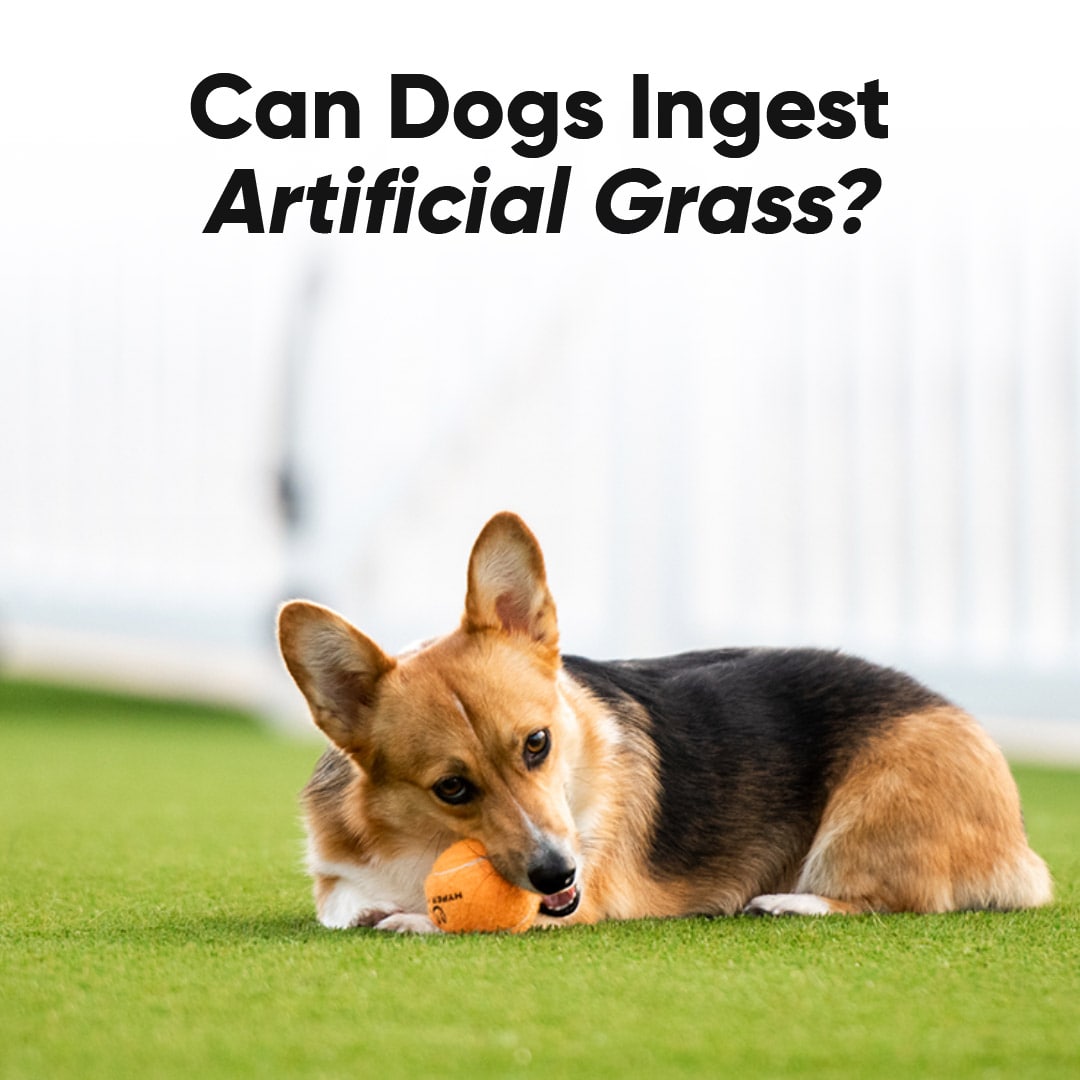- BACKYARD
- COMMERCIAL
- ENVIRONMENT
- FIELD TURF NEWS
- GOLF
- MAINTENANCE
- NEWS
- PETS
- POOL
- RESIDENTIAL
- TURF TIPS
What Will Happen if Dogs Eat Artificial Grass?

Your dog’s got a nose for adventure (and sometimes mischief!) So, if you’re thinking about artificial grass for pets, you might be curious – will my dog try to eat it? Let’s find out what’s behind the nibble and whether it’s anything to worry about.
Dogs Are Unlikely to Eat Artificial Grass
Every aspect of artificial grass construction and installation – from the material and texture of the blades to the secure anchoring and drainage systems – works together to create a surface that’s not only comfortable for dogs but also very difficult for them to chew or eat.
Texture and Durability
- Synthetic Texture: Unlike the soft, easily-tearable blades of real grass, artificial grass is designed for comfort, not chewing. For instance, FieldTurf Landscape products are made of strong synthetic materials like nylon or polyethylene that feel smooth or slightly stiff. This non-organic texture provides little satisfaction for a dog looking to gnaw on something.
- Durable Fibers: FieldTurf Landscape artificial turf for dogs goes through rigorous testing to ensure it can withstand heavy pet traffic. The blades are tightly woven together with a strong backing material. This makes it difficult for a dog to get a good grip on the individual blades, let alone rip or tear out a piece to chew on.
Installation Techniques
- Infill Materials: Many of our artificial grass installations use infill materials like sand or recycled rubber granules between the blades. These infills add weight, stability, and drainage, but they also make it even harder for a dog to excavate or pull at the turf.
- Secure Anchoring: Professional artificial grass installations typically involve securing the turf to the underlying ground with staples, nails, and adhesive. This strong anchoring makes it nearly impossible for a dog to dig up or pull away at the turf, eliminating the chance of grabbing a mouthful.
- Seamless Transitions: Professional installers also ensure a seamless transition between the turf and any surrounding borders or edges. This eliminates loose ends or frayed edges that might be tempting for a dog to chew on or pull at.
Underlying Systems
- Drainage Systems: A well-designed artificial grass drainage system prevents water from pooling on the surface. This eliminates the damp, earthy smell that might attract a dog who enjoys munching on grass.
- Excavation: Workers remove the existing earth, along with any grass or weeds. This means no more enticing natural smells like dirt, bugs, and plants.
- Additional Layers: Installers place a base layer followed by materials like drainage mats and weed barriers beneath the turf. These act as an additional obstacle and reduce any earthy/grassy aromas that might linger.
What Happens If My Dog Does Eat Artificial Grass?
While unlikely, some extra-curious pups might succeed at ingesting an artificial turf fiber or two.In most cases, you have nothing to worry about.
Manufacturers use non-toxic materials to make high-quality pet turf, ensuring it won’t poison your dog if they swallow a small amount. It will likely pass through their system naturally, like what would happen if they accidentally swallow a piece of toy.
We do recommend observing your dog closely for the next day or two, just as you would if they swallowed any type of common material. Watch out for symptoms like loss of appetite or vomiting, and don’t hesitate to call your vet at any time.
Questions? We’re Here to Help!
At FieldTurf Landscape, we understand that your pets are family. Contact us for a consultation and get all your artificial grass questions answered. We’ll help you create a beautiful, worry-free yard that both you and your dog will love! Get started by calling 866-352-4575 or sending us a message today.


